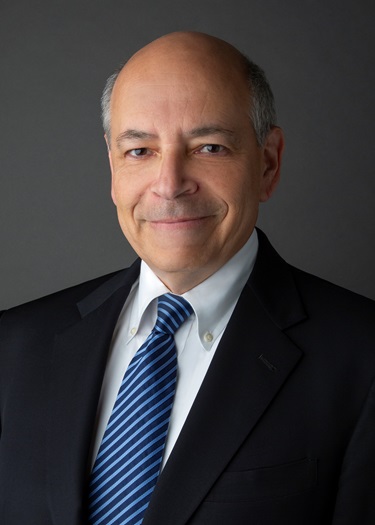Environmental Update
Supreme Court Holds Parties Cannot Use State Law to Expand EPA Superfund Remedies

On April 20, the U.S. Supreme Court issued its opinion in Atlantic Richfield Co. v. Christian, et al., holding that (1) the Comprehensive Environmental Response, Compensation, and Liability Act (CERCLA or Superfund) does not deprive state courts of jurisdiction over state-law claims related to Superfund sites, and (2) property owners that are potentially responsible parties (PRPs) under CERCLA must obtain Environmental Protection Agency (EPA) permission before undertaking remedial activities that diverge from the remedy selected for the site by EPA. In reaching these two seemingly unrelated holdings, the Court made several far-reaching rulings about the contours of the Superfund statute and the interplay between that statute and state law.
Atlantic Richfield concerns the Anaconda Smelter Superfund Site. Beginning in 1884, the Anaconda Copper Mining Company built three smelters — including one with a stack taller than the Washington Monument — near Butte, Montana. Anaconda’s operation impacted the site, and after Atlantic Richfield purchased Anaconda, Congress enacted Superfund and listed the 300-square-mile area as one of the initial Superfund sites on the National Priorities List. EPA has overseen remedial work at the site for 35 years and anticipates that such work will continue until at least 2025.
In 2008, scores of private parties whose properties are within the Site filed suit in state court, asserting trespass, nuisance, and strict liability claims related to the historic site contamination. The plaintiffs also sought “restoration damages,” that is, damages to be used to fund restoration activities at the plaintiffs’ properties that would go significantly beyond the remedial action EPA selected and required Atlantic Richfield to perform. Such “restoration damages” represent the cost of restoring their properties to pre-contamination condition. The property owners prevailed in the Montana courts, and the Supreme Court granted certiorari.
Turning first to jurisdictional issues, the Court held that it had the authority to review the Montana Supreme Court’s decision and that CERCLA does not strip state courts of their jurisdiction to hear some state law claims related to Superfund sites. The Court concluded that the property owners’ claims were properly before the Montana courts. In doing so, it rejected Atlantic Richfield’s argument that CERCLA barred the Montana courts from hearing the property owners’ state law claims. The company reasoned that CERCLA’s express bar on federal courts hearing challenges to EPA-selected remedies could be extended to state courts by looking at the relationship between the federal bar and other CERCLA provisions. The Court disagreed on two levels. First, it found no textual support for the position that CERCLA divests state courts of jurisdiction over purely non-CERCLA claims. Second, it found that the plaintiffs’ requests for damages arose under state law and were distinct from the Superfund remedy.
The Court then turned to whether the property owners could use state law in state courts to compel a remedy beyond what EPA has selected. At issue in the case was a section of CERCLA that prevents PRPs from implementing remedial action inconsistent with EPA decisions. The Court held that plaintiffs could not use their state law claims to require remediation beyond what EPA had ordered, unless they first obtained EPA’s agreement. A key element of this decision was the Court’s ruling that the property owners are themselves PRPs under Superfund. The statute defines four categories of PRPs, and among those are current owners of a “facility.” A “facility,” the Court explained, means “any site or area where a hazardous substance has been deposited, stored, disposed of, or placed, or otherwise come to be located.” Here, the plaintiffs’ properties were all part of the same “facility” where lead and arsenic had come to rest as a result of the Anaconda smelters’ operations. As current owners of the “facility,” the plaintiffs were PRPs.
Plaintiffs had argued that they were no longer PRPs because EPA had elected not to sue them, and even if EPA had sued them, they would not have had to pay for any of the remedy because one or more Superfund defense applied to them. Again, the Court disagreed. The Court reinforced the important distinction that a party may be considered a PRP regardless of whether it is ultimately sued or found liable. At bottom, the Court held that a party’s status as a PRP was an important part of CERCLA’s overall goal of providing a comprehensive remedy, even if one or more of those PRPs would not contribute monetarily to the cost of the remediation. As an example, the Court explained that otherwise “property owners would be free to dig up arsenic-infected soil and build trenches to redirect lead-contaminated groundwater without even notifying EPA. . . . We doubt Congress provided such a fragile remedy for such a serious problem.”
Atlantic Richfield serves to clarify several key CERCLA issues. First, a PRP cannot use state law to force another PRP to conduct remediation beyond what EPA has selected, unless EPA agrees. Second, CERCLA does not bar a party impacted by contamination from bringing suit for damages under state law, so long as that party does not seek damages for remedial actions beyond what EPA selected, unless EPA agrees. Third, a party’s status as a PRP and its ultimate CERCLA liability are two distinct concepts, and even where a party may not be required to share in the costs of remediation, its status as a PRP has implications. Fourth, the term “facility” is broad and extends beyond property lines to wherever contamination comes to be located — thus, a Superfund Site may include the properties of PRPs even where those PRPs have defenses to CERCLA liability.
For practitioners, the decision adds significantly to the Supreme Court’s relatively modest body of CERCLA jurisprudence and answers several specific questions, but it leaves several other questions open for the lower courts to decide. For example, what happens in cases where a state-law plaintiff is not a PRP, or where the additional restoration sought is not remedial in nature? On balance the decision provides PRPs that perform remedial work at CERCLA sites significant protection from certain plaintiffs who wish to require more work beyond the remedy EPA selected. But it will take years of litigation in other cases to determine the full impact of the decision and to resolve the related, unanswered questions.
Attorney Advertising—Sidley Austin LLP is a global law firm. Our addresses and contact information can be found at www.sidley.com/en/locations/offices.
Sidley provides this information as a service to clients and other friends for educational purposes only. It should not be construed or relied on as legal advice or to create a lawyer-client relationship. Readers should not act upon this information without seeking advice from professional advisers. Sidley and Sidley Austin refer to Sidley Austin LLP and affiliated partnerships as explained at www.sidley.com/disclaimer.
© Sidley Austin LLP
Contacts
Capabilities
- Stay Up To DateSubscribe to Sidley Publications
- Follow Sidley on Social MediaSocial Media Directory



